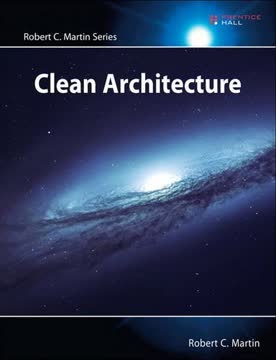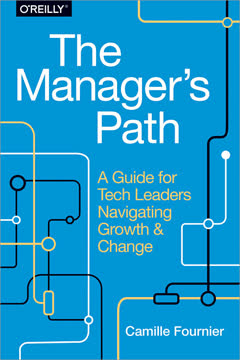Key Takeaways
1. Complexity is the root of software design challenges
Complexity comes from an accumulation of dependencies and obscurities.
Complexity accumulates incrementally. As software systems grow, they tend to become more complex due to the gradual accumulation of dependencies between components and obscure code sections. This complexity manifests in three primary ways:
- Change amplification: Small changes require modifications in many places
- Cognitive load: Developers need to understand large amounts of information to make changes
- Unknown unknowns: It's unclear what code needs to be modified or what information is relevant
Simplicity is the antidote. To combat complexity, software designers should focus on creating simple, obvious designs that minimize dependencies and obscurities. This involves:
- Modular design: Dividing systems into independent modules
- Information hiding: Encapsulating implementation details within modules
- Clear abstractions: Providing simple interfaces that hide underlying complexity
2. Strategic programming trumps tactical approaches
The best approach is to make lots of small investments on a continual basis.
Long-term thinking yields better results. Strategic programming focuses on creating a great design that happens to work, rather than just making code work. This approach involves:
- Investing time in design upfront
- Continually making small improvements
- Refactoring code to maintain clean design
Tactical programming leads to technical debt. While tactical approaches may seem faster in the short term, they often result in:
- Accumulation of quick fixes and hacks
- Increasing difficulty in making changes over time
- Higher long-term development costs
By adopting a strategic mindset, developers can create systems that are easier to maintain and evolve, ultimately saving time and effort in the long run.
3. Modules should be deep, not shallow
The best modules are those that provide powerful functionality yet have simple interfaces.
Depth creates abstraction. Deep modules hide significant implementation complexity behind simple interfaces. This approach:
- Reduces cognitive load for users of the module
- Allows for easier modification of the implementation
- Promotes information hiding and encapsulation
Shallow modules add complexity. Modules with complex interfaces relative to their functionality are considered shallow. These modules:
- Increase the overall system complexity
- Expose unnecessary implementation details
- Make the system harder to understand and modify
To create deep modules, focus on designing simple, intuitive interfaces that abstract away the underlying complexity. Strive to maximize the ratio of functionality to interface complexity.
4. Good interfaces are the key to managing complexity
The interface to a module contains two kinds of information: formal and informal.
Well-designed interfaces simplify systems. Good interfaces provide a clear abstraction of a module's functionality without exposing unnecessary details. They should:
- Be simple and intuitive to use
- Hide implementation complexities
- Provide both formal (e.g., method signatures) and informal (e.g., high-level behavior descriptions) information
Interfaces should evolve thoughtfully. When modifying existing code:
- Consider the impact on the module's interface
- Avoid exposing implementation details
- Strive to maintain or improve the abstraction provided by the interface
By focusing on creating and maintaining good interfaces, developers can manage complexity and make their systems more modular and easier to understand.
5. Comments are crucial for creating abstractions
Comments provide the only way to fully capture abstractions, and good abstractions are fundamental to good system design.
Comments complete abstractions. While code can express implementation details, comments are essential for capturing:
- High-level design decisions
- Rationale behind choices
- Expectations and constraints
- Abstractions that aren't obvious from the code alone
Write comments first. By writing comments before implementing code:
- You clarify your thinking about the design
- You can evaluate and refine abstractions early
- You ensure documentation is always up-to-date
Focus on what and why, not how. Good comments should:
- Describe things that aren't obvious from the code
- Explain the purpose and high-level behavior of code
- Avoid merely repeating what the code does
By prioritizing clear, informative comments, developers can create better abstractions and improve the overall design of their systems.
6. Consistent naming and formatting enhance readability
Good names are a form of documentation: they make code easier to understand.
Consistency reduces cognitive load. By establishing and following conventions for naming and formatting, developers can:
- Make code more predictable and easier to read
- Reduce the mental effort required to understand code
- Highlight inconsistencies that may indicate bugs or design issues
Choose names carefully. Good names should:
- Be precise and unambiguous
- Create a clear image of the entity being named
- Be used consistently throughout the codebase
Formatting matters. Consistent formatting helps by:
- Making the structure of code more apparent
- Grouping related elements visually
- Emphasizing important information
By paying attention to naming and formatting, developers can significantly improve the readability and maintainability of their code.
7. Continuous refinement is essential for maintaining clean design
If you want a clean software structure, which will allow you to work efficiently over the long-term, then you must take some extra time up front to create that structure.
Design is an ongoing process. Clean software design requires:
- Regular refactoring to improve existing code
- Continual evaluation of design decisions
- Willingness to make changes as the system evolves
Invest in improvement. To maintain a clean design:
- Allocate time for cleanup and refactoring
- Address design issues promptly, before they compound
- View each code change as an opportunity to improve the overall design
Balance perfection and progress. While striving for clean design:
- Recognize that some compromises may be necessary
- Focus on making incremental improvements
- Prioritize changes that provide the most significant benefits
By treating design as a continuous process of refinement, developers can keep their systems clean and manageable as they grow and evolve.
8. Error handling should be simplified, not proliferated
The best way to eliminate exception handling complexity is to define your APIs so that there are no exceptions to handle: define errors out of existence.
Reduce exception cases. To simplify error handling:
- Design APIs to minimize exceptional conditions
- Use default behaviors to handle common edge cases
- Consider whether exceptions are truly necessary
Aggregate error handling. When exceptions are unavoidable:
- Handle multiple exceptions in a single place when possible
- Use exception hierarchies to simplify handling of related errors
- Avoid catching exceptions you can't meaningfully handle
Make normal cases easy. Focus on making the common, error-free path through your code as simple and obvious as possible. This approach:
- Reduces the cognitive load on developers
- Minimizes the chances of introducing bugs
- Makes the code easier to understand and maintain
By simplifying error handling, developers can create more robust and easier-to-understand systems.
9. General-purpose code is usually better than special-purpose solutions
Even if you use a class in a special-purpose way, it's less work to build it in a general-purpose way.
Generality promotes reusability. General-purpose code:
- Can be applied to a wider range of problems
- Is often simpler and more abstract
- Tends to have cleaner interfaces
Avoid premature specialization. When designing new functionality:
- Start with a somewhat general-purpose approach
- Resist the urge to optimize for specific use cases too early
- Allow the design to evolve based on actual usage patterns
Balance generality and simplicity. While striving for general-purpose solutions:
- Avoid over-engineering or adding unnecessary complexity
- Ensure the general-purpose design is still easy to use for common cases
- Be willing to create specialized solutions when truly necessary
By favoring general-purpose designs, developers can create more flexible and maintainable systems that are better equipped to handle future requirements.
10. Write code for readability, not for ease of writing
Software should be designed for ease of reading, not ease of writing.
Prioritize long-term maintainability. When writing code:
- Focus on making it easy to understand for future readers
- Avoid shortcuts or clever tricks that obscure the code's purpose
- Invest time in creating clear abstractions and documentation
Make code obvious. Strive to write code that:
- Can be understood quickly with minimal mental effort
- Uses clear and consistent naming conventions
- Has a logical and easy-to-follow structure
Refactor for clarity. Regularly review and improve existing code:
- Look for opportunities to simplify complex sections
- Break down long methods into smaller, more focused pieces
- Eliminate duplication and inconsistencies
By prioritizing readability over ease of writing, developers can create systems that are easier to maintain, debug, and extend over time. This approach may require more effort initially but pays off in reduced long-term complexity and improved team productivity.
Last updated:
FAQ
What's "A Philosophy of Software Design" about?
- Focus on Complexity: The book addresses the core problem of software design, which is managing complexity. It emphasizes that complexity is the primary challenge in building and maintaining software systems.
- Design Principles: John Ousterhout presents a set of high-level design principles aimed at reducing complexity, such as creating deep modules and defining errors out of existence.
- Practical Advice: The book offers practical advice for software developers on how to think strategically about design, rather than just focusing on getting code to work.
- Educational Approach: It is based on Ousterhout's experience teaching a software design course at Stanford, where students learn through iterative design and code reviews.
Why should I read "A Philosophy of Software Design"?
- Improve Design Skills: The book provides insights into improving software design skills, which can lead to more maintainable and efficient code.
- Strategic Mindset: It encourages a strategic approach to programming, focusing on long-term design quality rather than short-term fixes.
- Real-World Examples: The book includes numerous real-world examples and case studies that illustrate the principles in action.
- Philosophical Insights: It offers philosophical insights into the nature of software design, making it valuable for both novice and experienced developers.
What are the key takeaways of "A Philosophy of Software Design"?
- Complexity is Incremental: Complexity builds up in small increments, and managing it requires constant vigilance and strategic thinking.
- Deep Modules: Modules should have simple interfaces but provide significant functionality, hiding complexity from the rest of the system.
- Information Hiding: Effective information hiding reduces dependencies and makes systems easier to modify and understand.
- Design it Twice: Consider multiple design options before settling on one, as the first idea is rarely the best.
What is the "Design it Twice" principle in "A Philosophy of Software Design"?
- Multiple Options: The principle suggests considering multiple design options for each major decision, rather than settling on the first idea.
- Radical Differences: It encourages exploring radically different approaches to understand the strengths and weaknesses of each.
- Improved Design: By comparing alternatives, you can identify the best design or combine features from multiple designs for a superior solution.
- Learning Opportunity: This process also enhances your design skills by teaching you what makes designs better or worse.
How does "A Philosophy of Software Design" define complexity?
- Practical Definition: Complexity is anything in the software structure that makes it hard to understand and modify.
- Symptoms: It manifests as change amplification, cognitive load, and unknown unknowns, making development tasks more difficult.
- Causes: Complexity arises from dependencies and obscurity, which can be minimized through good design practices.
- Incremental Nature: Complexity accumulates in small increments, requiring a zero-tolerance approach to prevent it from becoming overwhelming.
What is the importance of "Deep Modules" in "A Philosophy of Software Design"?
- Simple Interfaces: Deep modules have simple interfaces that hide the complexity of their implementations, reducing the cognitive load on developers.
- Functionality vs. Interface: They provide significant functionality relative to the complexity of their interfaces, offering a high benefit-to-cost ratio.
- Information Hiding: Deep modules effectively hide information, making it easier to evolve the system without affecting other modules.
- Examples: The book uses examples like Unix I/O and garbage collectors to illustrate the concept of deep modules.
How does "A Philosophy of Software Design" suggest handling exceptions?
- Define Errors Out of Existence: Redefine operations to eliminate error conditions, reducing the need for exception handling.
- Mask Exceptions: Handle exceptions at a low level to prevent them from propagating and complicating higher-level code.
- Aggregate Exceptions: Use a single handler to manage multiple exceptions, simplifying the code and reducing duplication.
- Just Crash: For certain errors, it may be more practical to crash the application rather than handle the exception, especially if recovery is complex.
What role do comments play according to "A Philosophy of Software Design"?
- Essential for Abstraction: Comments are crucial for defining abstractions, as they provide information that can't be captured in code.
- Describe Non-Obvious Information: They should describe things that aren't obvious from the code, such as design rationale and usage constraints.
- Part of Design Process: Writing comments early in the design process can improve both the design and the quality of the comments.
- Avoid Repetition: Comments should not repeat the code but instead provide additional insights and context.
What is the "Investment Mindset" in "A Philosophy of Software Design"?
- Long-Term Focus: The investment mindset emphasizes spending time on design improvements that will pay off in the long run.
- Continuous Improvement: It involves making continual small investments in the system's design to prevent complexity from accumulating.
- Strategic Programming: Developers should prioritize creating a great design over just getting code to work, even if it takes longer initially.
- Payback Period: The book suggests that the benefits of a strategic approach will outweigh the initial costs within 6–18 months.
How does "A Philosophy of Software Design" address the issue of naming?
- Create an Image: Names should create a clear image of what the entity represents, providing precise and intuitive information.
- Consistency: Use names consistently across the codebase to reduce cognitive load and prevent misunderstandings.
- Avoid Vague Names: Names should be specific and avoid generic terms that can lead to ambiguity and errors.
- Impact on Complexity: Good naming practices can significantly reduce complexity and improve code readability.
What are some best quotes from "A Philosophy of Software Design" and what do they mean?
- "Complexity is incremental": This quote highlights the idea that complexity builds up gradually, requiring constant attention to manage.
- "Working code isn’t enough": It emphasizes that simply getting code to work is not sufficient; good design is crucial for long-term success.
- "Modules should be deep": This quote underscores the importance of creating modules with simple interfaces that hide complexity.
- "Define errors out of existence": It suggests redefining operations to eliminate error conditions, simplifying exception handling.
How does "A Philosophy of Software Design" suggest dealing with performance concerns?
- Natural Efficiency: Choose design alternatives that are naturally efficient without sacrificing simplicity.
- Measure Performance: Before optimizing, measure the system to identify the true bottlenecks and ensure changes have a measurable impact.
- Critical Path Design: Focus on optimizing the critical path, the smallest amount of code that must be executed in the common case.
- Simplicity and Speed: Simpler code tends to run faster, and clean design often leads to better performance.
Review Summary
A Philosophy of Software Design, 2nd Edition receives mixed reviews. Many praise its insights on managing complexity and designing deep modules, while some criticize its emphasis on comments and lack of depth in certain areas. Readers appreciate the clear writing and practical advice, particularly for newer developers. However, some experienced programmers find it too basic or disagree with certain recommendations. The book's focus on object-oriented programming and academic perspective is noted, with some wishing for more diverse language examples and real-world applications.
Similar Books










Download PDF
Download EPUB
.epub digital book format is ideal for reading ebooks on phones, tablets, and e-readers.




